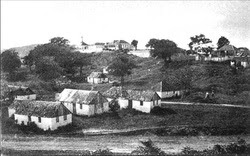Cultural Connections in Antigua
The Commonwealth nation of Antigua and Barbuda has a deep-rooted history that is reflected in the unique Creole culture of the twin islands. This Creole culture is a direct result of the slavery that displaced African peoples endured on sugar plantations throughout British rule of the islands. With slavery controlling the economy until its abolition in 1834, the effects of subjugation are still apparent in local day-to-day life from methodology of worship to cuisine (or lack, thereof) and even hierarchical ethnic relations. Unfortunately, certain aspects of the islands’ Creole culture – such as the language of Antiguan Creole – were adamantly rejected by the upper and middle classes prior to the islands gaining independence therefore generating an inaccurate stigma surrounding the lifestyle.
Despite being rich in culture, Antigua struggles with diversity and prosperity due to its archival dependence on Britain. The island’s notorious reliance on sugar means most of its food is imported from Britain and America. Furthermore, if not for Antigua’s distinguished tourist attractions, lush beaches, and historical landmarks, the economy would likely suffer. After a recent natural disaster prompting the Prime Minister to cease collective land ownership for Barbuda, insisting that the introduction of private land ownership would finance the restoration of the island, citizens fear that Barbuda, like Antigua, will transform into a destination vacation dependent on tourist money to maintain a stable economy.

Antiguan culture is heavily immersed in the arts and humanities, with globally renowned authors and poets calling the island "home." Harmony Hall Art Gallery, the center of the Antiguan arts community, presents an annual Craft Fair as well as an Artist's Exhibition. Music in Antigua is largely forged by African culture as reflected by the indispensable calypso and steel band characteristics of modern popular tunes. Within the capital of Antigua, you can tour the stunning St. John's Cathedral, a historical landmark last rebuilt in 1845, whose impressive towers are often the first sight of the island's visitors. Also in St. John is the charming Museum of Antigua and Barbuda where visitors can learn the unprecedented story of Antigua from its geological birth to modern times through intriguing exhibits including the bat of Viv Richards, one of the finest cricket players of all time. Antigua's relentless adoration of cricket is crucial to the culture of the island and, as a matter of fact, Antigua has produced several of the world's most skilled cricket talent.
Sources
“Antigua.” The
Virtual Caribbean Library, ggccaribbean.wpengine.com/listing/antigua-and-barbuda/.
Antigua and Barbuda / Exploring Antigua and Barbuda, www.antigua-barbuda.org/Agpnt01.htm.




Comments
Post a Comment